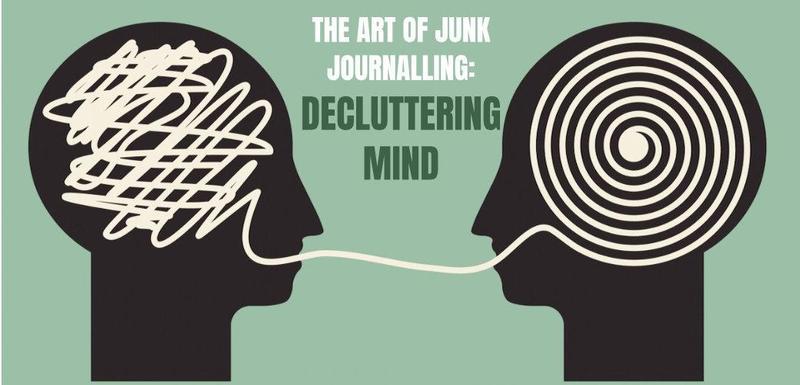THE ART OF JUNK JOURNALLING DECLUTTERING MIND
THE ART OF JUNK JOURNALLING DECLUTTERING MIND
There are days when our work-desk is loaded and so is our mind. Human brain is efficiently designed to do multiple tasks with minimal number of errors. However, when it comes to thoughts, it is not that easy. Most of the times, there is a long-hours traffic of our own thoughts that blocks the roads to the goal we want to reach. This art specifically works in case of people who feel awfully stuck and do not know where to begin with. I understand that circumstances sometimes become overwhelming to handle. You have the zeal to begin but not the clarity- inn such cases, junk journaling can be a basic resort.
All you need is a journal and a pen/pencil.
Here today, I want to share the 6 ‘S’ to declutter your mind, which is likely to bring your focus back that you have been longing.
SPILL
Back in school-days, we used to mug-up loads of necessary and unnecessary information a day before the exam. On exam day, we used to just spill this information on answer-sheets. This is exactly the first step to bring your focus. Just spill out whatever you have in your mind. You need not think of the context, just keep on writing until your mind feels like empty. The idea is to clean this tiny little room called brain, vacant the space as much as possible, only then it can look organized. Preferably you should write in points, but there are no limitations just pen down all the tasks, emotions, goals, ideas and miscellaneous.
SORT
Next you need to categorize. You can use different color pens to sort the points you just noted while spilling. Categories are person-specific and you can write as many you feel comfortable, I personally suggest to take out at least five categories which seems to be obvious and important. After a certain period of practice, you might also be able to sub-categorize the things. For instance, five years back, my categories were self, family and friends, college, job and ambition while the subcategories were as simple as urgent and not-urgent or for daddy, mummy, home, sibling and best friend. Just keep the things as simple as possible.
SCRUTINIZE
Now is the time to understand and examine the big picture. Be careful! You will feel the urge to slip back into over-thinking. Sticking to the simplicity is the only rescue. Analyze the categories one at a time. Think about the bigger perspective. You will immediately come to know what you need to do. Think of how will you go around the different tasks, what is easier, what takes less time than other, what things can be done together, what resources you have, what will be your plan of actions. Scrutinizing all the miniscule details of all the categories will automatically bring you to the next step.
SELECTION
Whenever you select, deep down you are setting your priorities. You select ‘A’ over ‘B’ for a reason. Just stick to it. Things really become easier to handle when you know your priorities. The simplest criteria of selection is ‘need of the hour’. We are tempted to do other things but normally forget to do the things which were required to be done in the present moment. Therefore, the very first is ‘need of the hour’, followed by basic or tedious, time-consuming or quick-work, day or night, and so on. Set your priorities and give numbers to tasks as well as categories.
START
What are you waiting for? Everything is done, it is just a matter of starting. You only have to follow the sequence you just made. All seems to be worthy when you begin. No matter how many tasks you have to do, it definitely feels light-headed to have the clarity. At least, it is not a mess of thought anymore. you know it all. You know where to start, what to do first what to do second and what to do last and what not to do.
STAY
They say, beginning was bliss but journey is pain. When actually it is not true. Your journey is personal, what matters is your perspective, some may see it cumbersome, others see it as adventurous. Some see it risky, others see it as thrilling. Your choices and perceptions decides if the circumstances are beautiful or ugly. C’mon you have eaten the horse and only the tail hangs out. So, you hang in there and keep walking through your junk journal journey.
You can do it on daily/weekly basis. Once you understand and start enjoying the perks of junk journaling, there’s no looking back.
Author Bio:
Dr. Pooja Anand Sharma
Psychologist And Alternate Healing Therapist
Be the first to post a message!
